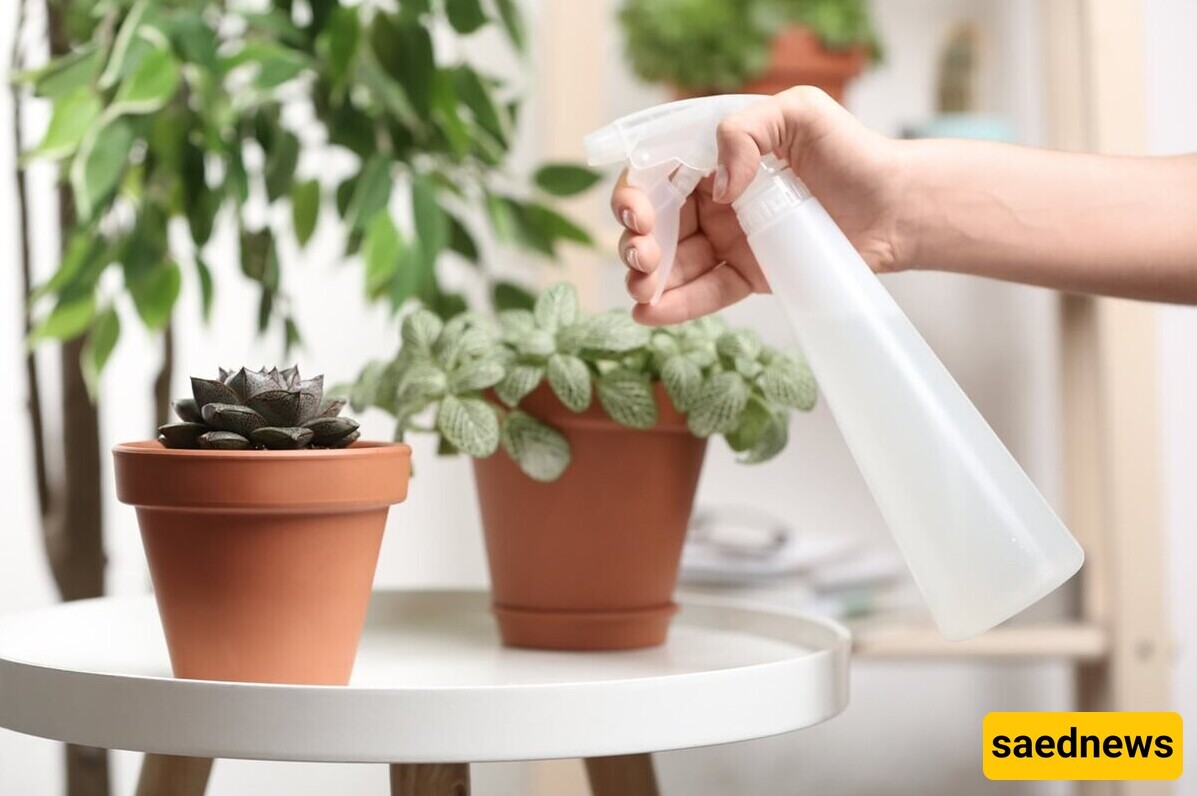Fungicides for houseplants help eliminate or inhibit the growth of fungi. They can be used to control fungi that harm plants, including rust, mildew, and pests. Therefore, fungicides are considered essential for plants. In the following, SaadNews will discuss the best time to use fungicides. Stay with us.

Fungicides work in various ways, but most of them damage the fungal cell membrane or interfere with energy production in fungal cells. In agricultural products, fungicides protect the potential yield. Fungicides generally do not increase yield, and if applied after an infection occurs, they do not recover the lost yield.
Leaf rust on plants
Softening of stems and their shedding
Brown spots on leaves and their shedding
Powdery mildew on leaves and stems
Benomyl Fungicide: A benzimidazole fungicide that has been effectively used in various food crops and ornamental plants. Benomyl is primarily metabolized into carbendazim.
Mancozeb Fungicide: A broad-spectrum contact fungicide used on many fruit, vegetable, nut, and field crops. It protects against a wide range of fungal diseases including potato blight, leaf spots, blight, and rust.
Captan Fungicide: A fungicide belonging to the phthalimide class (chemicals connected to ammonia). It is non-systemic and often added to other pesticide formulations. It is used in agriculture and residential areas on fruits, vegetables, and ornamental plants. Captan improves the appearance of fruit.
Carbendazim Fungicide: A broad-spectrum, systemic fungicide from the benzimidazole class and a metabolite of benomyl.
Iprodione Carbendazim: Iprodione carbendazim fungicides compete for absorption in the soil, increasing their viability in mixtures. Their conversion in mixtures is slower, which also increases their bioavailability.
Bordeaux Fix Fungicide: A strong fungicide and bactericide solution containing copper compounds, providing protective contact effects. Bordeaux Fix is mostly used for prevention and treatment.
Topas Fungicide: A systemic fungicide from the triazole chemical group with protective and curative effects, used against powdery mildew on fruit trees. It is compatible with most insecticides and fungicides.
Best Time to Use Fungicides on Fruit Trees:
Winter is the best time to apply fungicides to fruit trees because, during this period, the lack of leaves makes application easier and the amount of fungicide required is less. This ensures that the whole tree surface can be sprayed effectively. Also, during winter, trees do not bear fruit, preventing poisoning of the fruit.

Best Time of Day for Spraying Fungicides: According to research, fungicides are most effective when applied early in the morning or at night. Higher temperatures and lower humidity levels increase evaporation or volatilization of fungicides. Spraying in the early morning when temperatures are lower and humidity is higher prevents this. Dew is most prominent in the early morning or at night, which helps distribute the fungicide across plant parts that may be susceptible to infection.

Use fungicides before a disease develops. Although many fungicides are systemic, they do not completely eradicate diseases once they start.
Use shorter spraying intervals in favorable weather conditions for plant diseases.
Apply fungicides in calm or mildly windy conditions for optimal coverage and to minimize drift potential.
When possible, apply fungicides before rain to prevent them from being washed away.
Replace fungicides regularly. Systemic fungicides, when used continuously, may lead to fungal resistance over time.
Conclusion: Therefore, remember that the best management strategy for crop plant diseases is, first and foremost, to promote plant health. Before planting, ensure that the soil, water, and light conditions are ideal for your plant. Also, make sure to apply appropriate sanitary practices such as fertilization, pruning, and environmental control methods like using winter ice water techniques to improve plant health and prevent pests and diseases. While fungicides offer benefits, they also have drawbacks. Therefore, by being aware of the type, amount, and timing of fungicide use, optimal results in disease prevention and control in agriculture can be achieved. I hope you have gained valuable insights from this content on the right timing for fungicide use, and feel free to share it with others who are interested in plants and gardening. For other related topics, you can visit the lifestyle section of Saadnews. Thank you so much for your attention and support.

